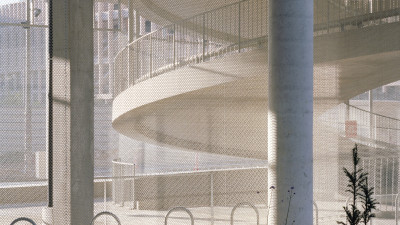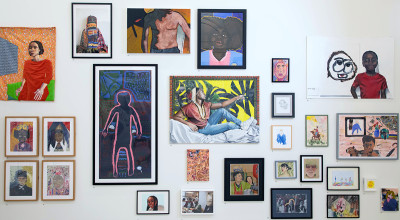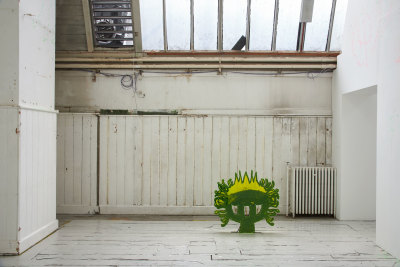Meaning in material: the story behind our new event series
Meaning in material: the story behind our new event series
By Kate Goodwin
Published 17 October 2014
How the attention given to material choices and use in our ‘Sensing Spaces’ exhibition inspired a debate about the essential building blocks of architecture.
-
Midway through installing Sensing Spaces: Architecture Reimagined at the Royal Academy last winter, I took the sociology professor Richard Sennett on a tour of the exhibition space.
As we walked through what was still essentially a building site, he lamented that in recent years many architecture students put together design proposals with very little sense of what materials they would use. He later reflected that for him, the impact of the completed Sensing Spaces installations came not from the formal or conceptual propositions they made, but from their materiality.
I had intentionally chosen architects who prioritised materials, often erring towards a position of craft and the handmade to create the seven installations for Sensing Spaces. Sennett’s comments made me consider the degree to which the essence of these works did lie in their material presence.
From the early discussions, the architects focused on the materials and construction to ensure that the installations were physically arresting. It was through materials that they evoked time, place and geographies beyond the specific gallery setting. Kengo Kuma used Japanese bamboo in his installation which highlighted the aromatic qualities of traditional Japanese building materials while Pezo von Ellrichshausen used untreated pine for their entire installation, allowing it to change colour, delighting in the patina of use left by those who climbed it.
Francis Kéré took a slightly different approach, using a hexagon plastic commonly used as the infill in doors – a hidden building material but with intriguing visual and acoustic characteristics – to define both the structure and substance of his tunnel, elevating the material to a new status. The exhibition was focused on experience and led me to consider what other questions surround an investigation of the material aspects of architecture.
-

Installation by Kengo Kuma
Photo © Royal Academy of Arts, London, 2014. Photography: James Harris. / © Kengo Kuma & Associates.
-
Materials give architecture its form and substance. However, they are almost never used in architecture in their raw form; they are manipulated in some way by the human hand, industrial processes, or now with digital fabrication. The relationship between labour or production and raw materials is in delicate flux, shaped by economics, politics, technology, and by culture. The cost of raw materials and resources is subject to local and global market demands. If materials are rarely used in their raw form, where is the line between what we perceive as ‘natural’ and manmade? What if a process of production is entirely natural, or a biological process is simulated?
Making evident the processes behind a building can be compelling, though in other cases to remove traces of what or how something is made can have an equally powerful – and meaningful – result.
Concrete, for example, often popularly positioned with dystopian visions, is a material which has both liquid and solid material properties and is given its character through the production process. Ceramics, once highly crafted and very local products, are now increasingly mass produced in factories, creating a product which performs better but whose cultural connections have shifted. What does this form of mass production do to the product’s perception, use and creative application?
Technology has undoubtedly had a major impact on architectural conception and production. There was a notable moment a number of years ago when one walked into the architecture room of the Summer Exhibition the balance had tipped with the vast majority of models being made of the same white homogenous material. 3-D printing meant that form and concept became the dominant conversation in that room. It divided the public, some were seduced and intrigued, others were bewildered by the loss of recognisable material distinction within the works on display. I think that our relationship with materials will constantly evolve and be influenced by many factors, which I hope we can explore in the event series – first questioning the meaning of materials practically and philosophically, then looking at the implications of their manipulation, and finally discussing experience. It should be a stimulating – and busy – week of events.
The Meaning in Material series is organised by the RA Architecture Programme in collaboration with P.E.A.R (the Paper for Emerging Architectural Research). The events are on 20, 22 and 24 October – find out more and book here.
Kate Goodwin is The Drue Heinz Curator of Architecture at the RA.




